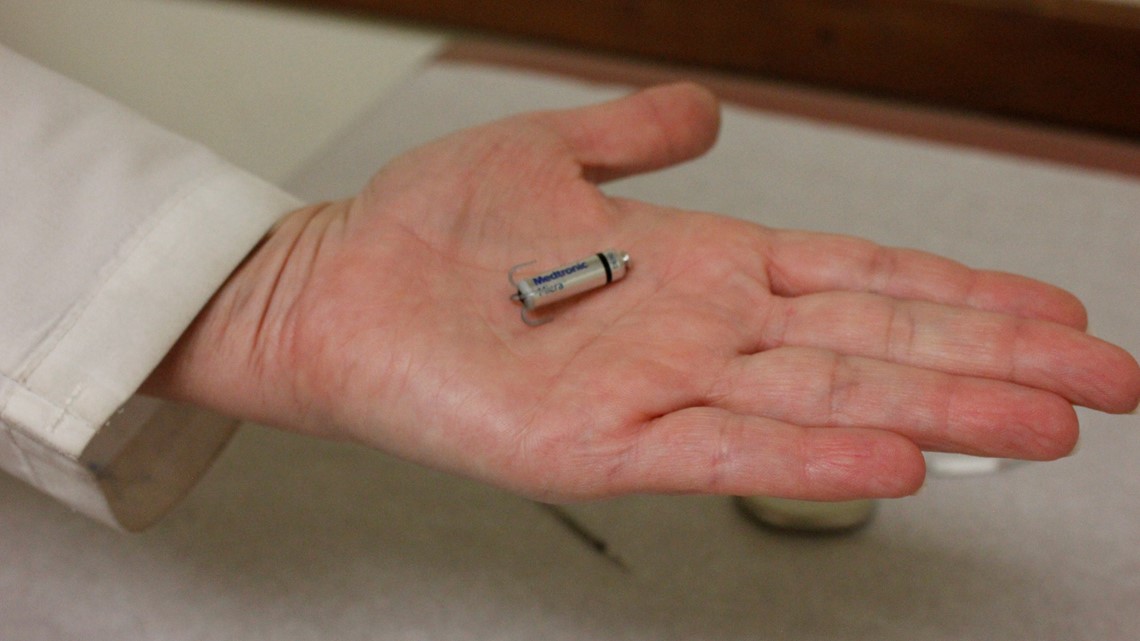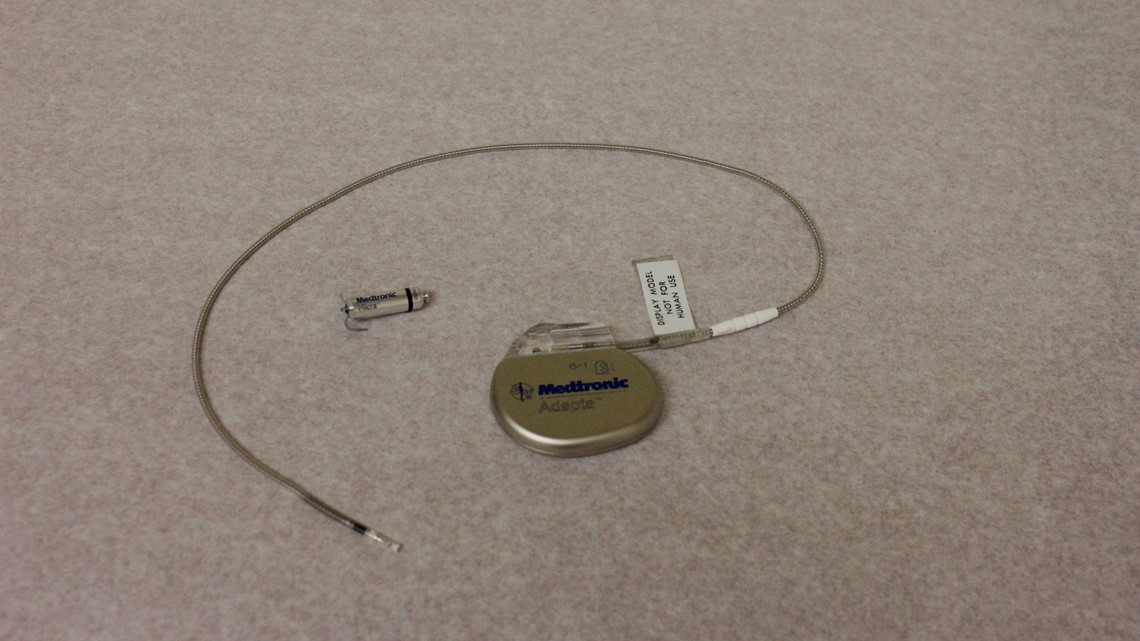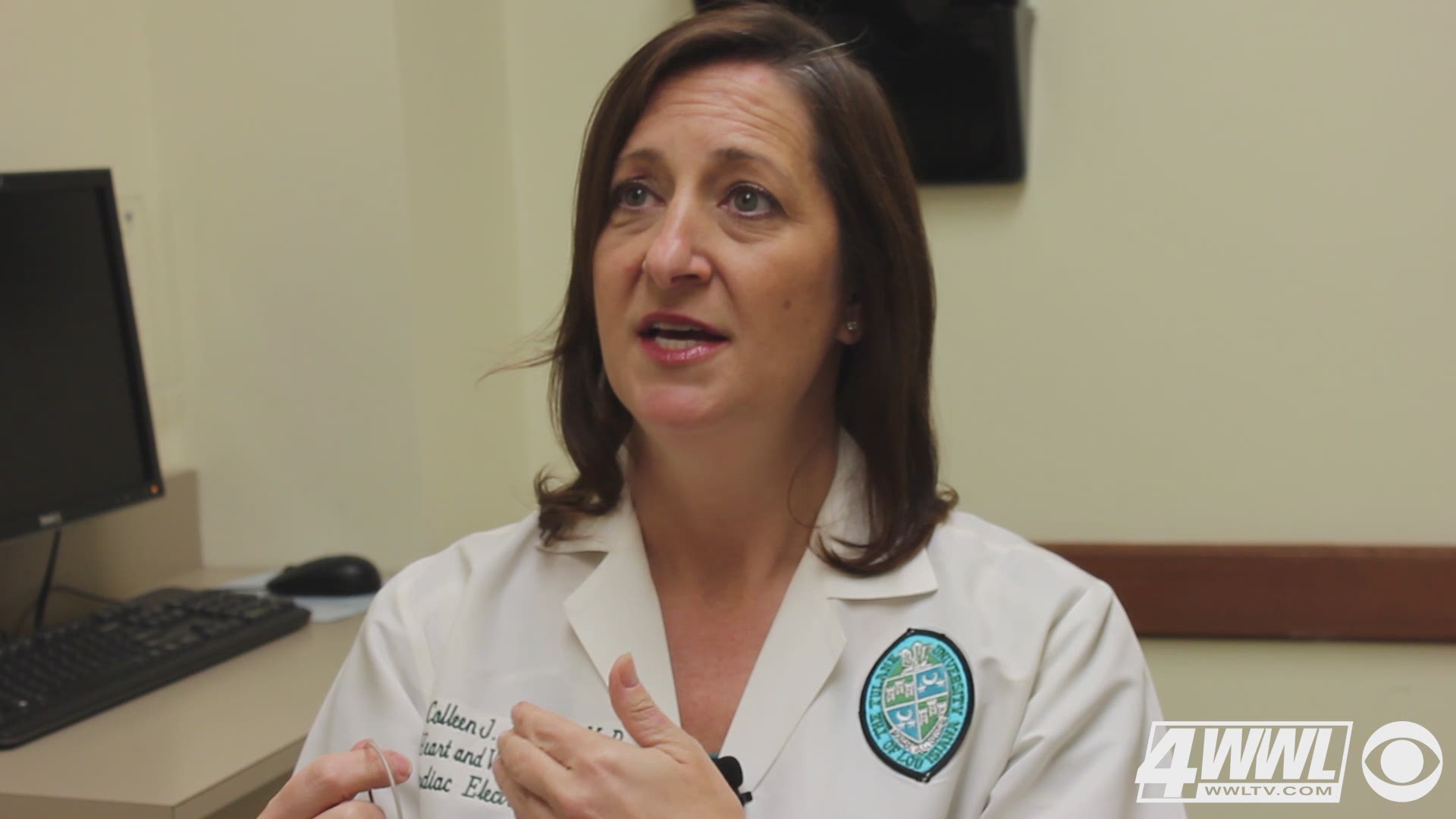NEW ORLEANS – The world’s smallest pacemaker, which is about the same size of a pill, is now an option for patients with heart problems in New Orleans.
The Micra Transcatheter Pacing System, or Micra TPS, is about one-tenth the size of a traditional single-chamber pacemaker and is completely wireless.
(story continues under video)


Dr. Colleen Johnson, electrophysiologist at the Tulane University Heart and Vascular Institute, performed one of the first procedures at Tulane Medical Center for the Micra TPS. She says the Micra TPS procedure is completely different and less invasive than a conventional pacemaker.
For a traditional pacemaker, doctors have to surgically make a pocket underneath the skin of the patient’s chest wall to place the battery, or generator, of the pacemaker. A blood vessel must be opened for the lead, or wire portion of a traditional pacemaker, to be placed to connect to the heart muscle. The lead then connects to the generator and paces the heart, Dr. Johnson says.
(story continues under video)


With the Micra TPS, there is no wire or lead and no surgical pocket.
“We go through the leg and the access is similar to what we do for like cardiac catheterizations and other types of invasive cardiology procedure. So, it’s through a small tube placed in your leg that goes into the heart and then just allows us to connect the Micra TPS directly to the heart tissue,” Dr. Johnson said.
The recovery time is also not long. Dr. Johnson says after the Micra TPS procedure, patients can be discharged the same day. Typically, after a traditional pacemaker is implanted, patients are held overnight and then discharged the next day.
The device, which was approved by the FDA in April 2016, significantly reduces the complications that sometimes accompany the traditional pacemaker, according to Dr. Johnson. One of the main complications seen are issues with the lead, such as lead dislodgement from the heart, lead failure or lead recalls, she says.
“There is no lead with the system, long wire with the system, so actually the risks with the Micra TPS System are about half of the risks of what it would be for a traditional pacemaker system."
According to Dr. Johnson, with the Micra TPS, patients are also safe to have an MRI, as well as safe to walk through metal detectors. She says that for many of her patients, the new device was the better option for them.
“It’s been such a pleasure to be able to provide this option to patients and for many of my patients who the Micra TPS system went into, they were also higher risk for a lot of the complications that come with a single chamber system, and by using the Micra TPS we were able to stay away from a lot of those risks,” Johnson said.
She says her patients with the Micra TPS are pleased with the results.
“Almost more so for women, it’s really nice not to have scarring and devices on your chest wall. It’s very nice to be able, especially in our warm weather climate, to be able to have a pacemaker system and no one can tell my patients have this pacemaker system.”
Connie Rentz, who has had a traditional pacemaker and defibrillator for about a year and a half, says she is “thankful” for both.
“I have them neatly tucked away in my chest,” she says.
Rentz says she hasn’t had any major complications with her traditional pacemaker so far, however she has had issues with her defibrillator.
“My defibrillator started shocking me and Dr. Drennan (her doctor) had to do a Pulmonary Ablation to correct some of my heart issues,” she said.
Johnson says the Micra TPS cannot replace a defibrillator and it is not advised for patients who already have traditional pacemakers to switch to the Micra TPS unless other reasons, such as major complications, warrant it.
Rentz said if her traditional pacemaker did give her issues, she would not be happy to go through another procedure, but would do it if her doctor recommended it.
Johnson mentioned that the largest of the worries with the surgery is a potential risk with infection due to the surgical wound, however that risk comes with both the Micra TPS device and traditional pacemaker.
The Micra TPS system is currently an alternative for patients who need a single-lead pacemaker, not those in need of double-chamber pacemaker systems, but medical professionals remain hopeful.
“We know technology keeps moving forward so it will be here one day,” Johnson said.
In the meantime, Johnson said it has been a pleasure to give her patients another option with the Micra TPS device.
“I think that this is a wonderful tool in the armamentarium that we have to help our patients and so I would definitely recommend anyone to ask their physicians about it if they do need a pacemaker.”
For those interested in learning more about the Micra TPS click here.

